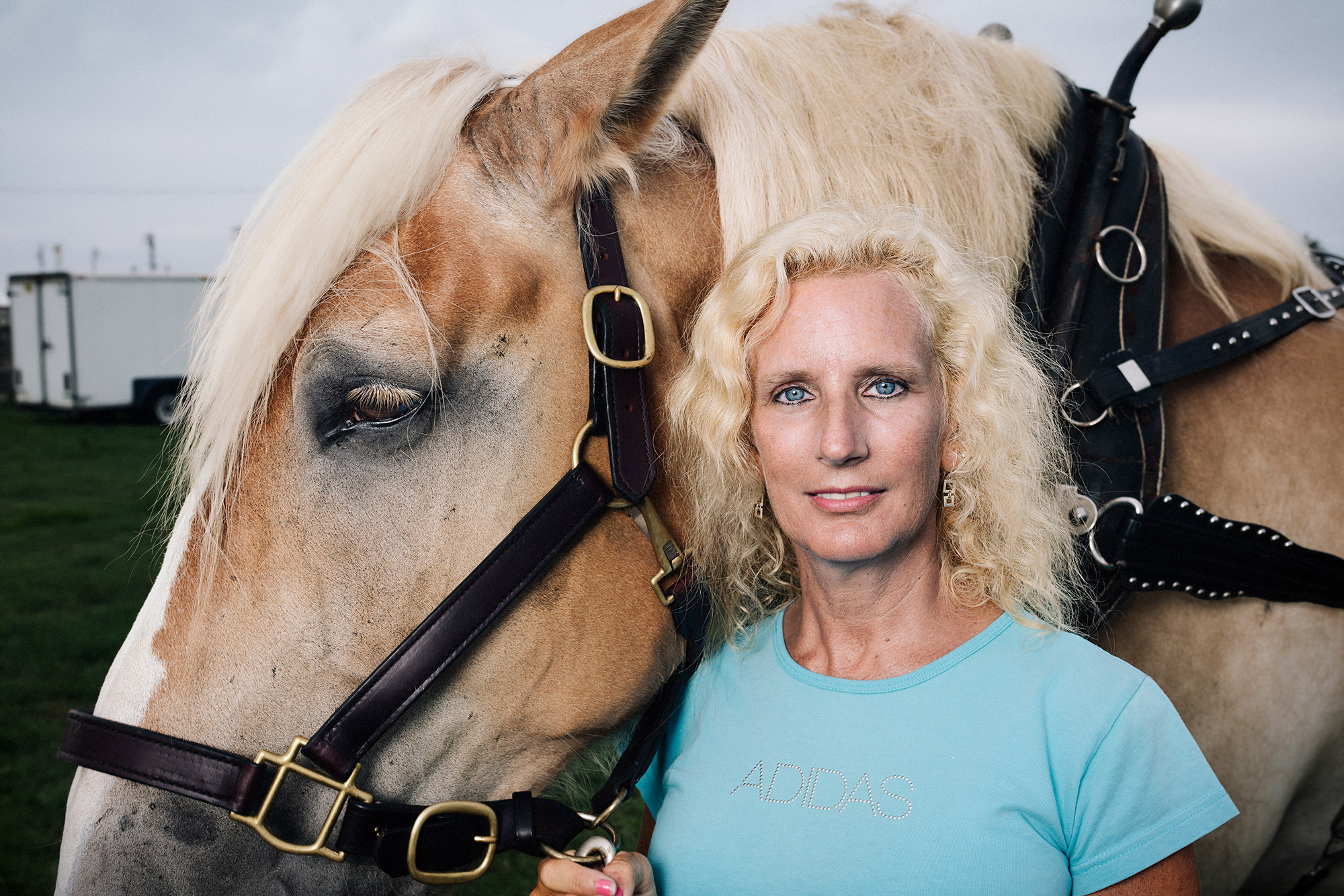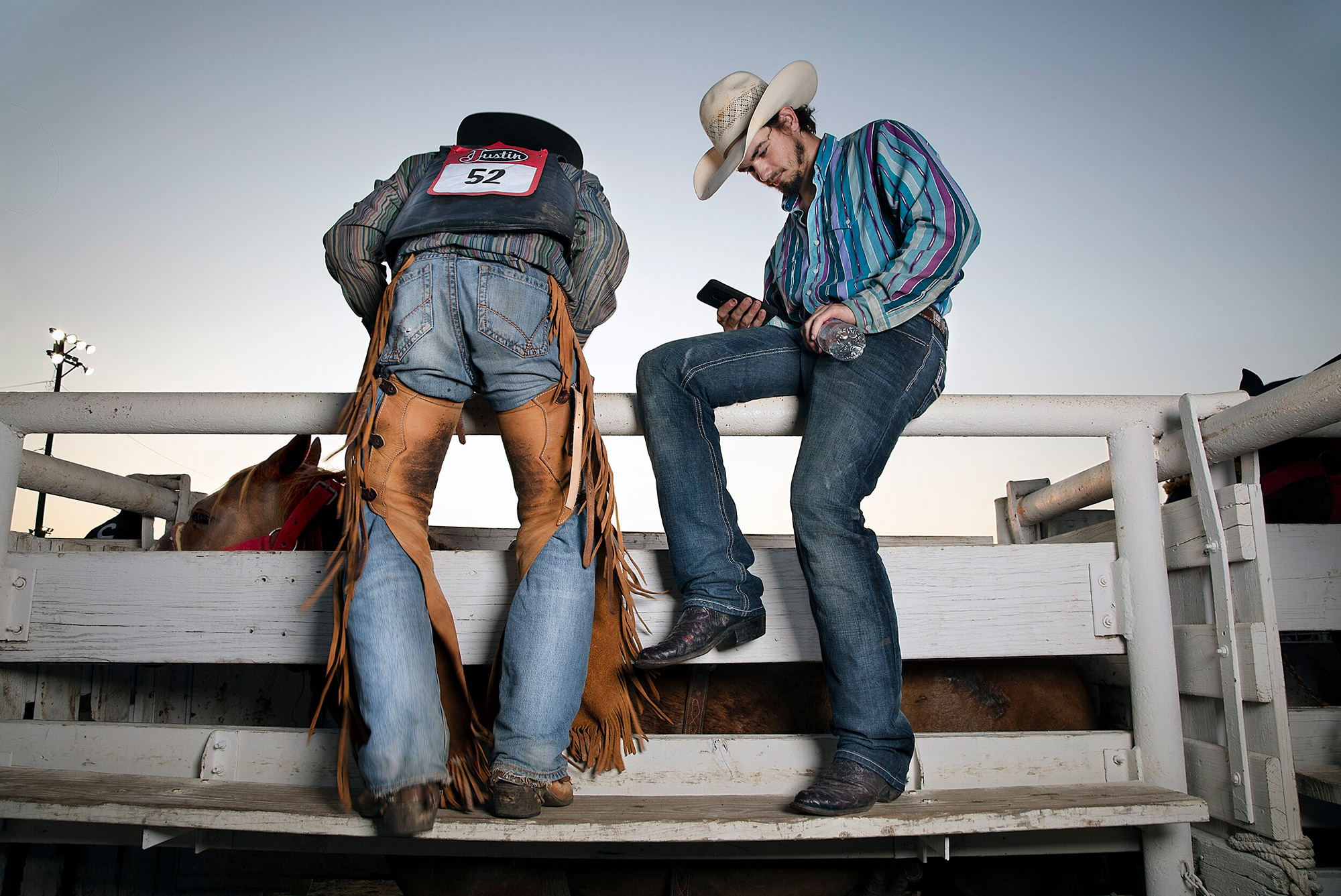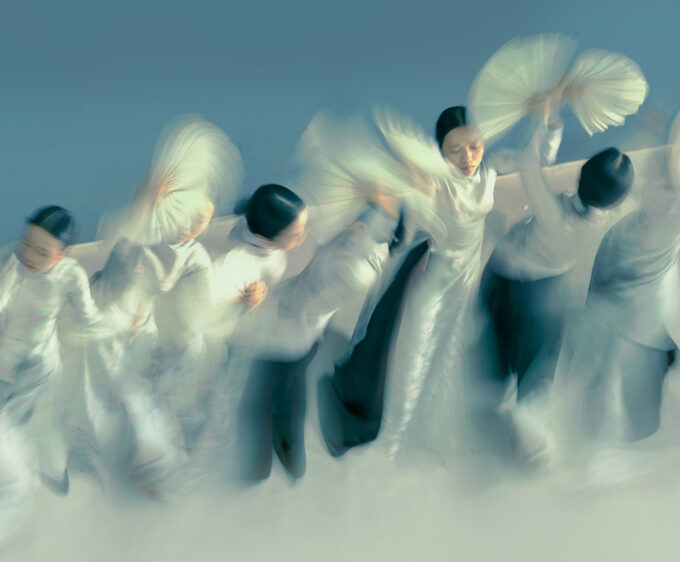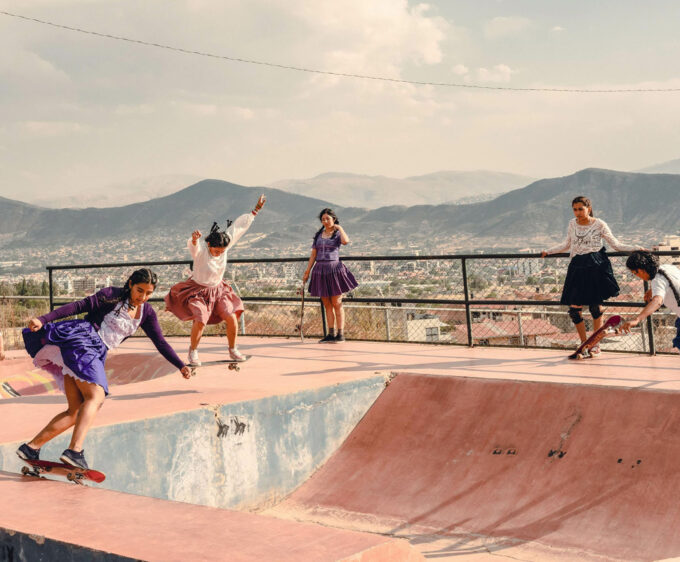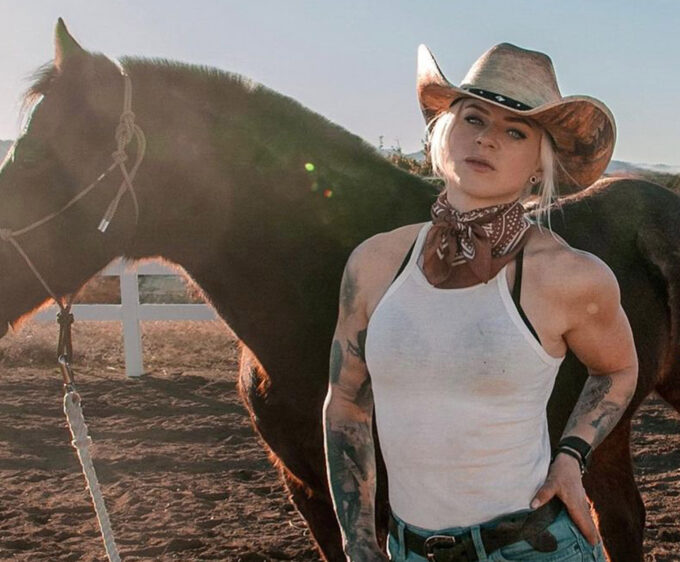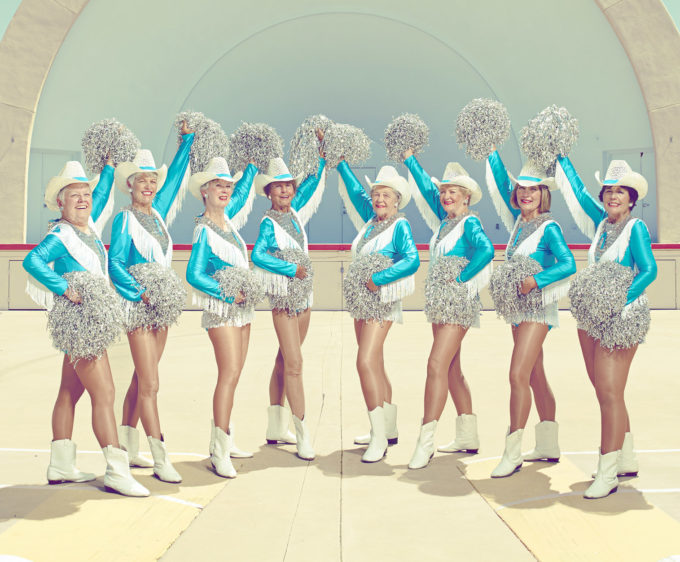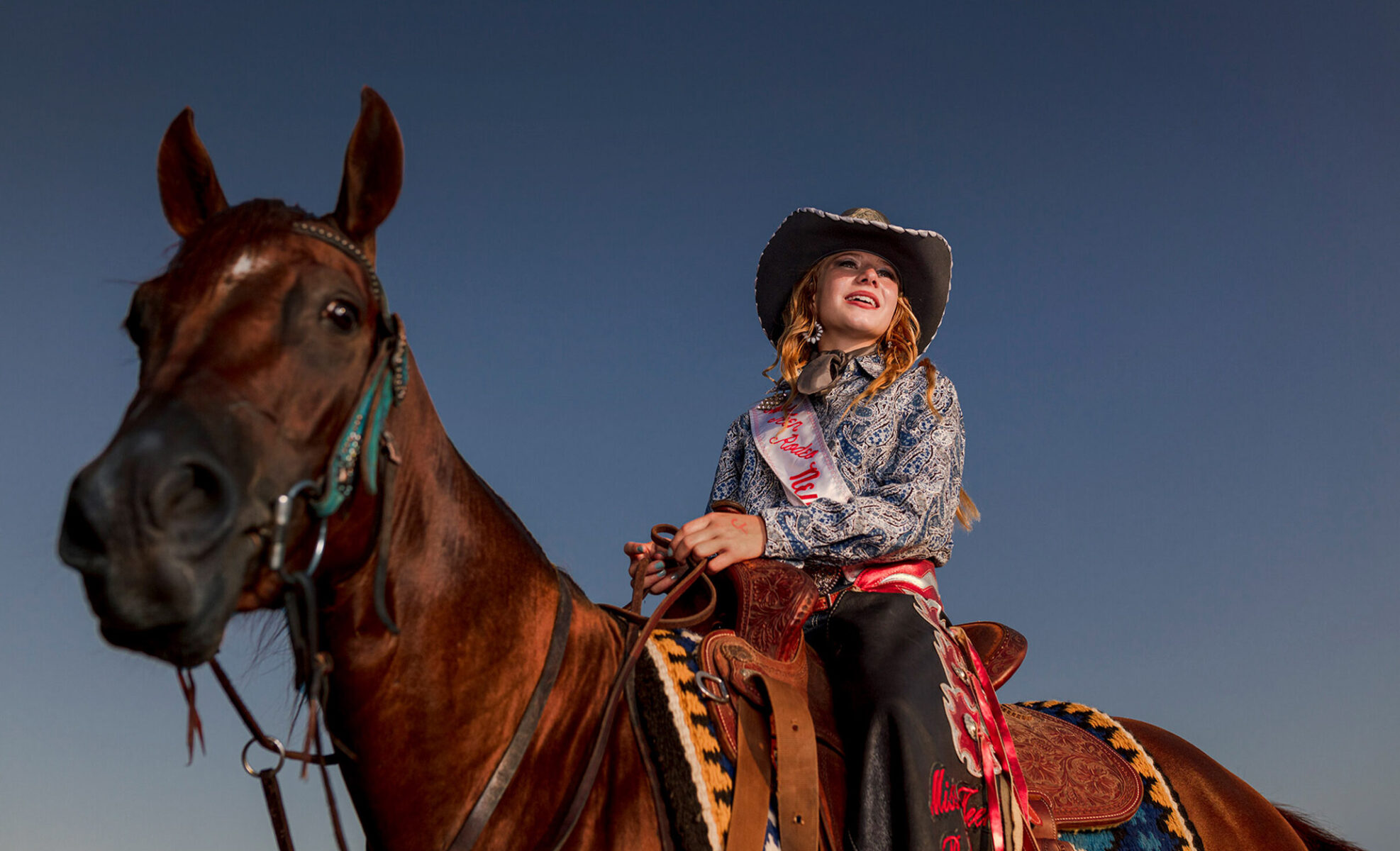
Queen Of The Rodeo
Photographer Chris Scott Snyder wanted to capture a series of work on rodeos; this took her on a steep learning curve, getting to know its people, customs and passions. Here she talks about that experience, and what lead her to this point
By Glorious
Photography by Chris Scott Snyder
Chris Scott Snyder is an artist, cloisonné jewellery maker and photographer and has been working in these disciplines for over 40 years. She currently lives and works on Martha’s Vineyard, an island off Massachusetts in the US, and now concentrates on photography. She graduated from Tyler School of Art at Temple University with a BFA in painting. Chris seeks to reveal authenticity and honesty in her subjects and uses her talents as an artist to blend fine art with photography. Her most recent work is a series on the rodeo and the women who take part; for this she spent time with one rodeo in particular, learning about the skills and passion involved and getting to know those who take part.

Glorious: Can you tell us about yourself and how you began your career in photography?
Chris Scott Snyder: My first camera was a Leica given to me in high school. My father was a photographer during WWII. He taught me everything about the technical aspects of the camera, including setting up a darkroom and introducing me to developing photos. In my teens, I spent hours in the darkroom, printing. I sought perfection, but something was missing in my pictures. Painters can achieve an illusion by manipulating reality, and they have the advantage of being able to dramatise their creative vision with exaggerated reality.
At college, I abandoned photography for painting, searching for a way to bring all the pieces together. I was working in egg tempera, a finicky, detail-oriented medium.
With painting, you begin with a blank canvas – literally. You are the master of genre, composition, colour and light. My inspiration came mainly from Renaissance painters like Jan van Eyck, Rogier van der Weyden and Bruegel. These early painters were not only creating art but documenting society.
After college, I was introduced to jewellery-making by a talented friend, Cheryl Stark, which led me to cloisonné. Cloisonné is something like painting in miniature. It is an ancient technique for decorating metal objects with colored material, held in place or separated by thin metal strips of wire, usually gold or fine silver. The process is meticulous and requires a great deal of discipline. I made cloisonné jewellery for many years. When my son, Ben, became interested in photography, the camera came back into my life, and I found my way into seeing the world through the lens again. People had always been a central theme in my art and I had missed this element while making jewellery. Cloisonne is abstract, so getting back to shooting faces and places felt familiar and energising.
Glorious: Do you like women’s sport? Did you grow up playing any sport?
Chris Scott Snyder: I can’t say I am an avid sports fan. I grew up loving kickball in the neighbourhood, games that went long into the summer nights. I ran track and field in middle school, but the arts took over in high school. As an introvert, I have always been happy on long walks with my Labrador Retrievers. Many creative ideas have come to me on solitary treks in the woods or on the beach. I grew up around boats and spent most summers on the water, then my family moved to Martha’s Vineyard, and the sea surrounded us. My son surfed, my husband, Jon, is an avid sailor and rower, and I also rowed for a few years. The ocean offers a great range of activities. And there is nothing like the sound of the pounding surf.
Glorious: Do you follow and or play any sports now? If so, what does sport do for you?
Chris Scott Snyder: I enjoy watching the Olympics. The athletes prepare for these games for years; their determination to win is fierce and profound. The games draw you in with excitement for the individual as you recognise their struggle to achieve their top performance, with the world watching.
We especially like the skiing events. My husband’s father developed Stratton Mountain Resort, and my husband spent his childhood on the slopes. My own skiing experience is limited. We like to exercise healthy habits, staying current, practicing positivity, and laughing often.
Glorious: Did you grow up around the concept of rodeo?
Chris Scott Snyder: When I was a teenager, my brother-in-law, Buddy, took me to my first rodeo in Vinita, Oklahoma. I don’t think I’ll ever forget the experience of the hot sun and the dust kicked up by riders barrelling around the ring. The cowboys and cowgirls on horseback were new to me. The dynamics between the horse and rider fascinated me because the horse seemed to oblige the rider, moving deftly and quickly with hardly any correction from the rider – especially considering all the distractions of the rodeo. If I’ve learned one thing, riding a horse isn’t as easy as it looks!
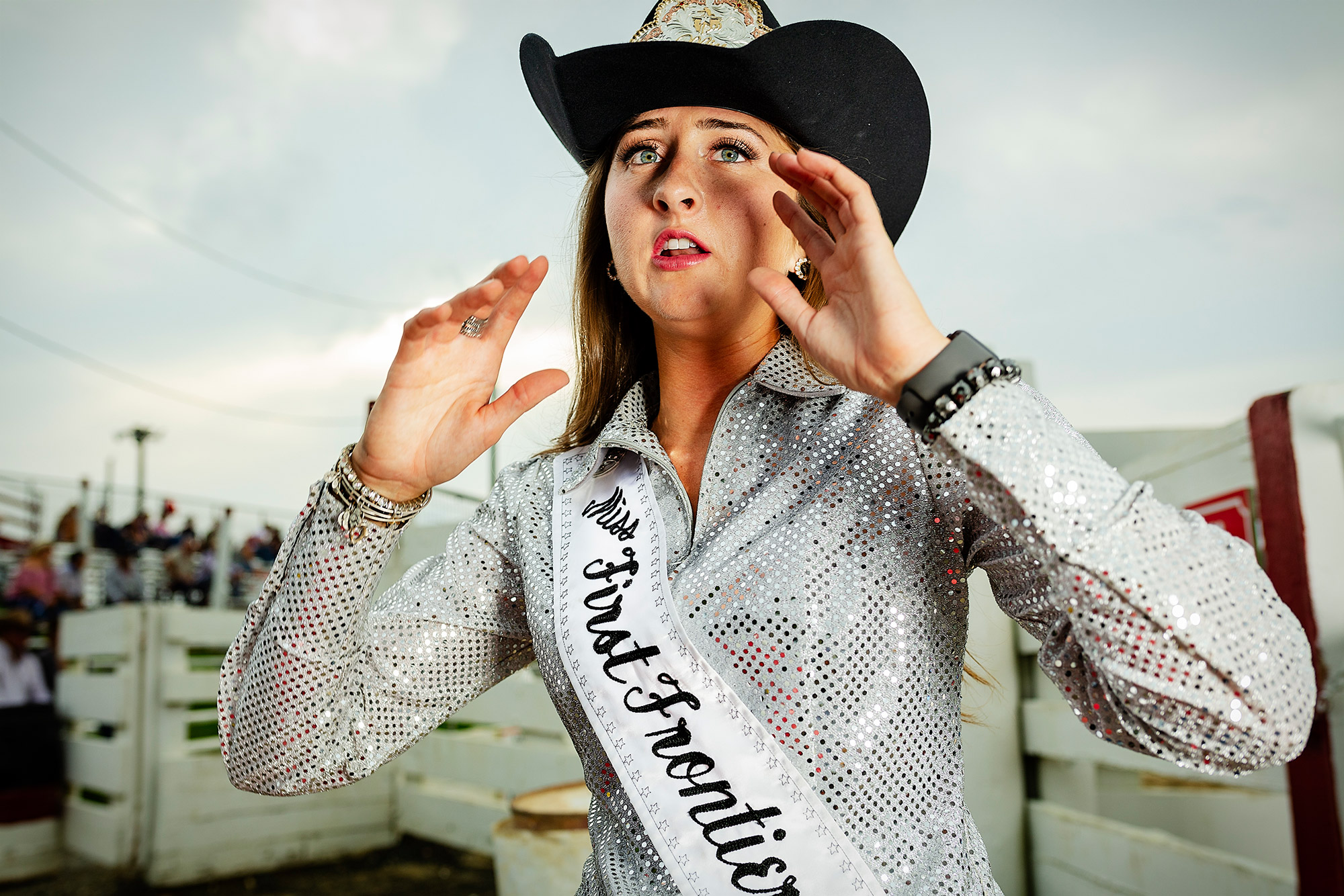
energising
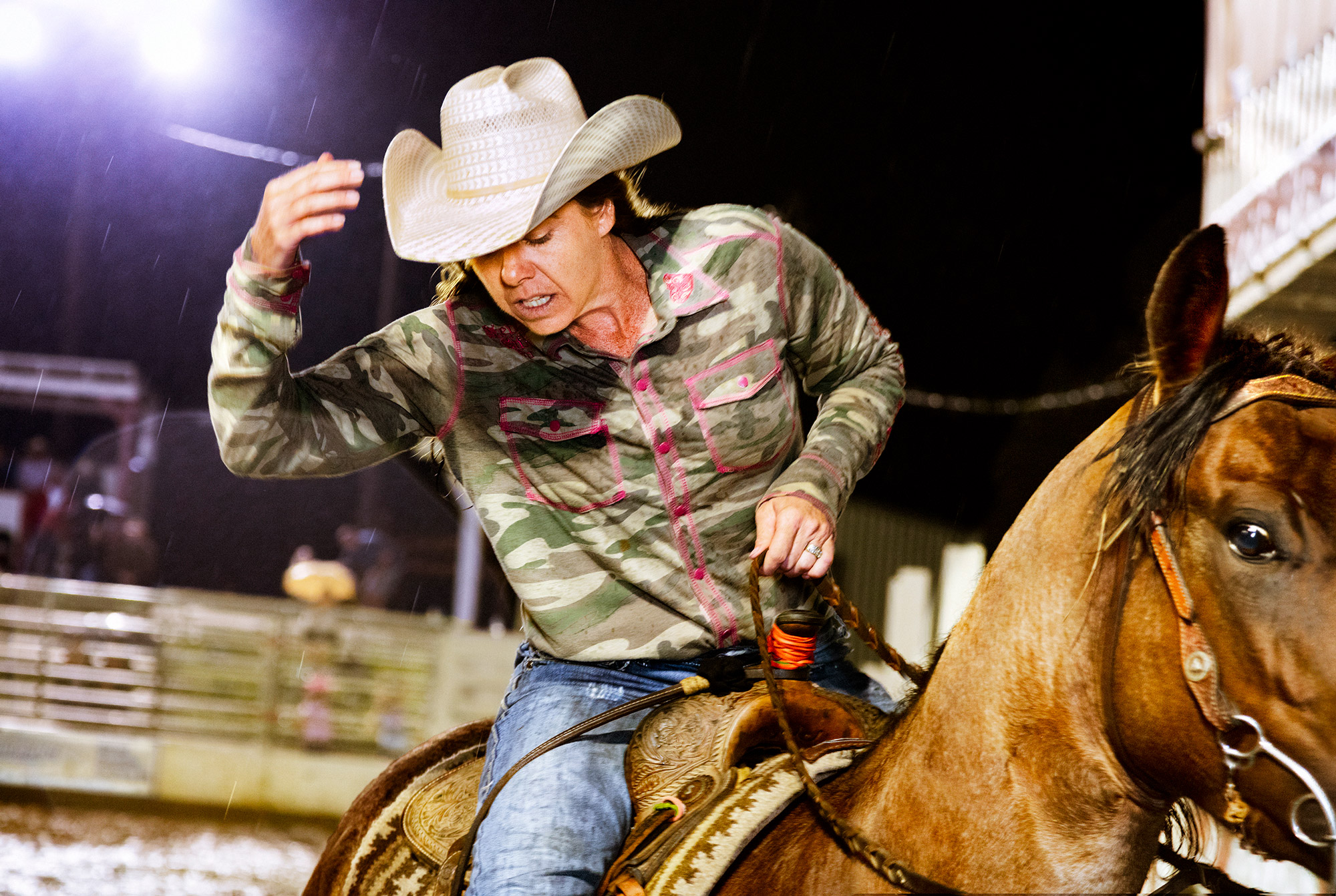
Glorious: Do you have a love of horses? Presumably this is important when you are in such close proximity, as animals can sense an uncomfortable situation?
Chris Scott Snyder: My best friend kept a horse in a barn at her home – it was called Whistle. I was never totally comfortable around horses, even though I hold their beauty, agility and magical attachment to owners in high regard. Before I began this series of rodeo photos, I researched horses, watched videos, and spoke to as many riders as I could who would instruct me on the basics of the horse and rider. I learned a great deal. A horse is a trained animal, and there is request, response and trust required from both parties. Being aware of the animal’s reactions to its surroundings is paramount to the rider and horse’s compatibility. I’ve had Labrador Retrievers my entire life. I’ve worked with trainers, and I have never stopped the training process, even now with my eight-year-old dog, Isaac, because we all wander off track now and then.
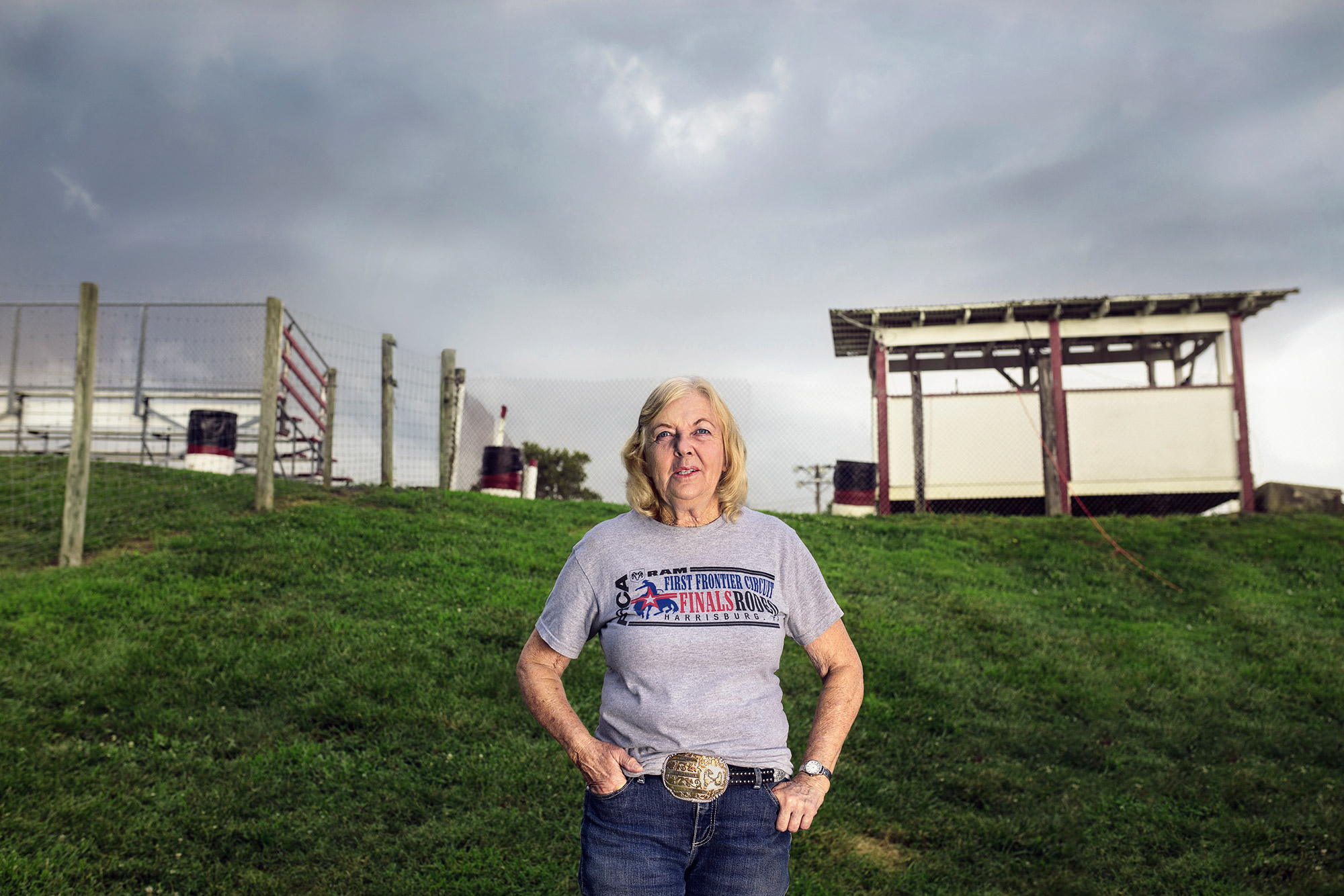
Glorious: How long did it take to shoot this series? What unexpected challenges did you face?
Chris Scott Snyder: I first had the idea of photographing the rodeo while talking to another photographer. We were bouncing ideas off of each other when, out of the blue, I said, “I’m going to photograph cowgirls!” I’ve always been more interested in photographing people, rather than objects or landscapes. I had it in mind to document women in rodeo and wanted to shoot a remarkable portrait of a modern cowgirl but I soon learned that this was going to be more difficult than I thought. To initiate myself on the subject I phoned the Women’s Professional Rodeo Association. The WPRA started in 1948 when a group of 38 Texas ranch women wanted to ride rodeo, then and now a male-dominated sport. Initially, they called themselves the GRA, the Girls’ Rodeo Association, the first professional sports association created solely for women by women. The WRPA administration told me that taking photos of the rodeo women was not permitted if they were in the ring because they were professionals, and the images were copyrighted. Every rodeo has a photographer.
Some licensed photographers work their way up to the position of rodeo photographer by shooting hours of images from a not-so-great position at the arena. I would be permitted to photograph rodeo participants outside of the ring, with the individuals’ permission. Next, I had to find the rodeos that might be in my location, and I was surprised that so many events were taking place in my area. I chose Cowtown Rodeo in Pilesgrove, New Jersey, the longest-running weekly professional rodeo in the USA, which started in 1929. Before I went to Cowtown, knowing my restrictions, I spoke with the owners, RJ and Betsy, who assured me of access to the rodeo rider area, although not the “sweet spot” for taking shots in the ring. They couldn’t have been more accommodating.
Another wonderful thing happened while I was preparing to shoot the rodeo. I also contacted the Professional Rodeo Cowboys Association (PRCA.) I discovered that the rodeo season has twelve circuits to follow in America, and contestants compete in their respective circuits. The top riders qualify for each of the circuit’s final rodeos. The PRCA introduced me to the current Miss First Frontier, Bri Fedorkowicz Coker, the official spokesperson for the PRCA in the northeast. We spoke at length on the phone, and she coached me about the ways of the rodeo with friendly and welcoming enthusiasm. She was the defining light of what was to come when I stepped into the world of photographing cowboys and cowgirls.
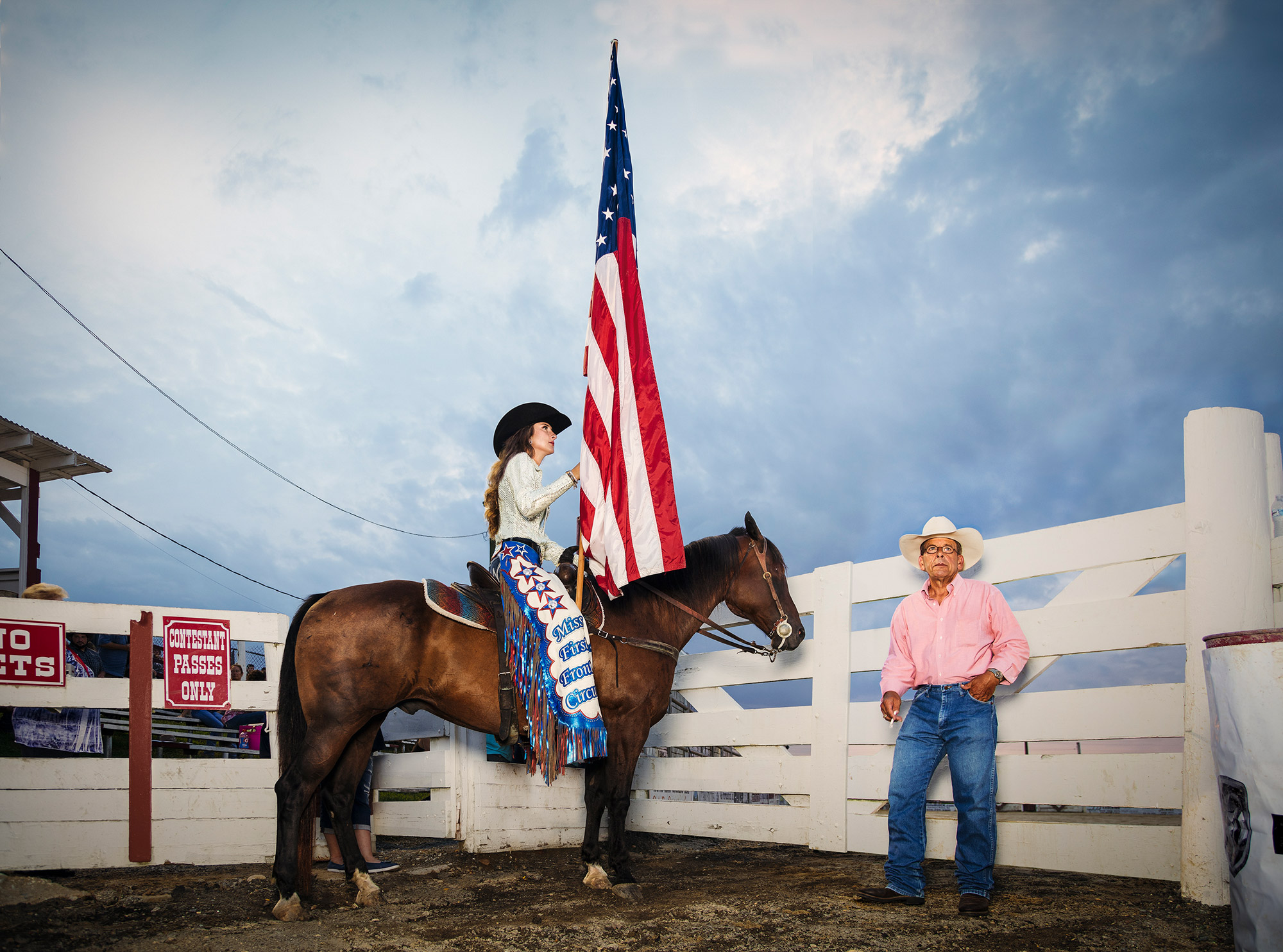
Glorious: What did you learn and what surprised you most about the rodeo community and lifestyle?
Chris Scott Snyder: I was overwhelmed by the pleasant temperament of everyone involved with the rodeo. Rodeo folks are like family to each other and they are welcoming to newcomers, whatever their role may be. Politeness flows like water in conversation, and most folks were accommodating to my needs as a photographer. I would show up in awkward places at the wrong times with flashes that could potentially startle a horse. These cowboys and cowgirls often worked a job that supported the rodeo and horse. On any given weekend, they might finish work, load up their horse and drive nine hours to the rodeo and compete in the arena, often for less than half a minute, then immediately load up for the long drive home. Most rodeos are held at night because it’s cooler; you can imagine how exhausting the return trip in the early morning hours would be.
At Cowtown, I had excellent access to photograph the rodeo riders before and after entering the ring. It was a small and bustling area with a lot going on, cowboys stretching, dressing, taping hands and knees. As the show begins, the space is busy with people. Chaps were flying, and spurs were rattling, but there were no women. At this particular rodeo, the women riders stay close to their trailers until the time of their event. Because most of the participants trailer their horses to Cowtown, there is a rather large group of campers. I found the women cowgirls preparing for the show at their home-away-from-home. They were polite and cheerful and extremely busy, taking care of the horses, getting dressed, with their family in tow, sometimes babies.
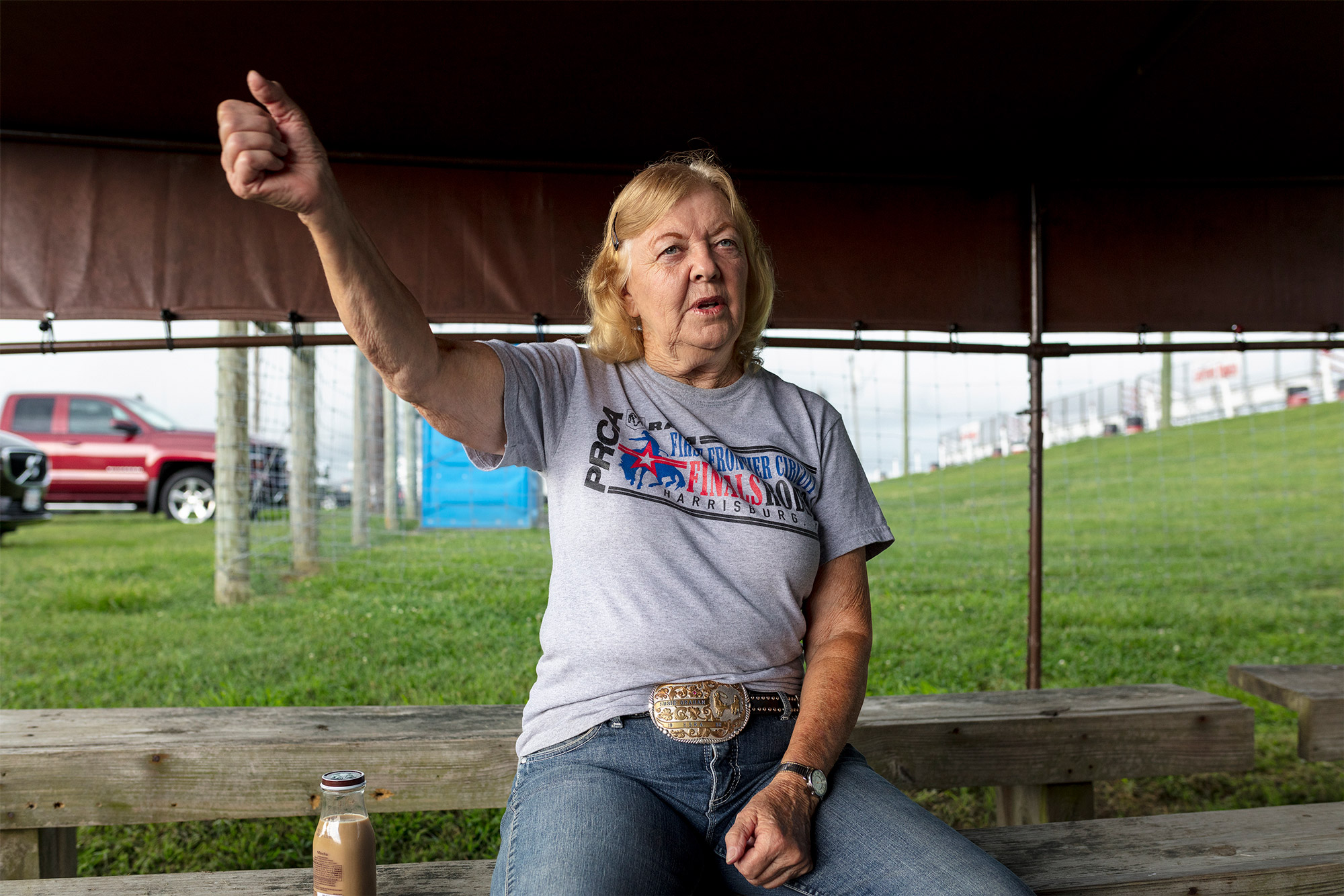
Glorious: Did you know your subjects beforehand/develop a close bond with them? How do you help people to relax so you can capture the best portraits?
Chris Scott Snyder: When I start shooting a series, I’m often going into a situation that I’m unfamiliar with. I initially feel uneasy, and I produce a particular type of photograph in the early shoot, maybe a bit more quirky. As I become more relaxed with the people and the surroundings, my photos become more confident and composed. When I don’t know my subjects, I approach them the same way I would as if I knew them, with a smile and conversation. I always have questions and people love to talk about themselves. I’m a great listener, so I take pictures while they are talking. Also, for the most part, people enjoy having their portraits taken, especially men. It’s not uncommon for me to make friends with the people I meet while shooting photographs. We all have a lot more mutual interests than we think.
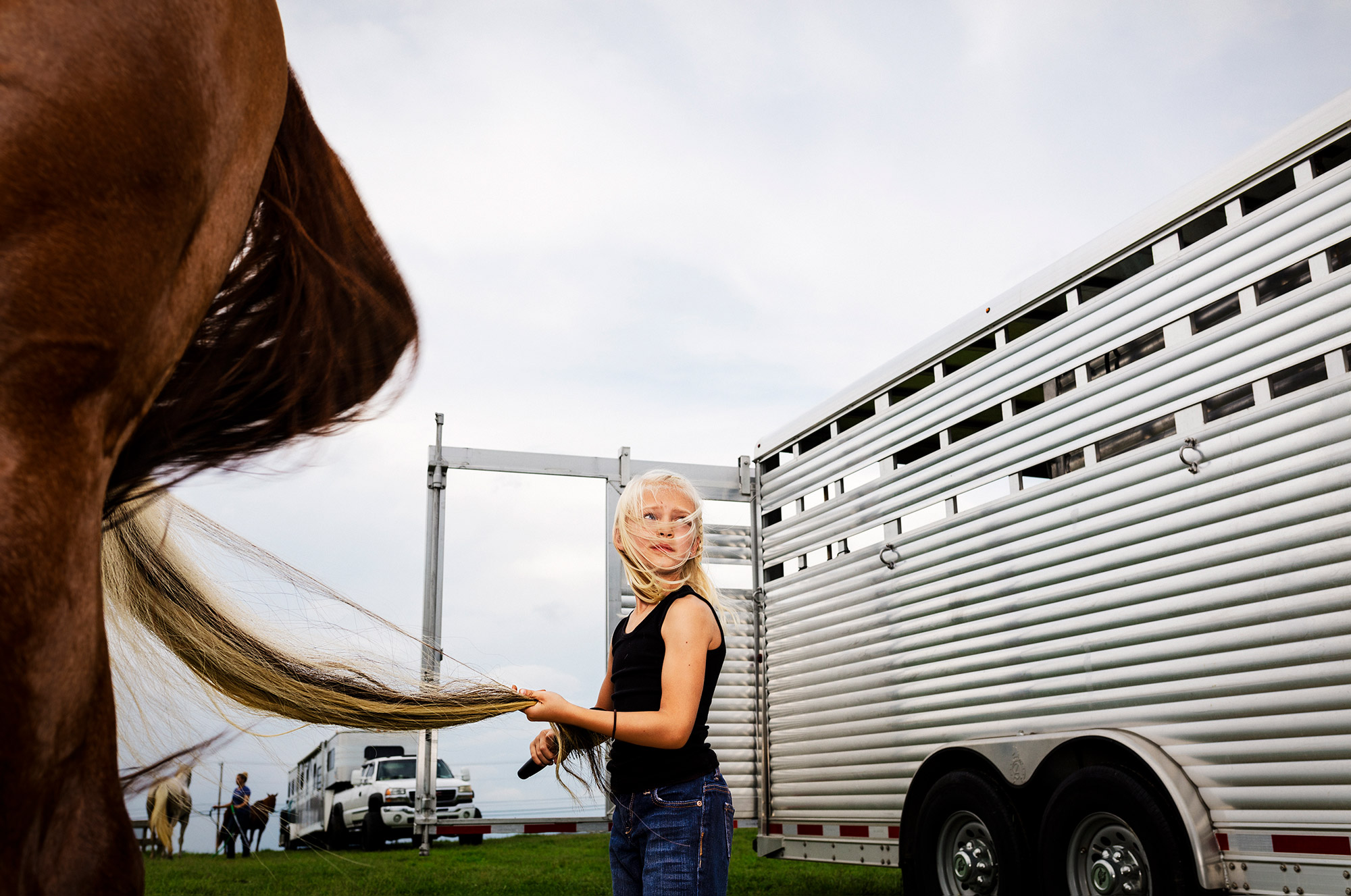
Glorious: What is your favourite image from the series and why? And how would you describe a modern cowgirl?
Chris Scott Snyder: My favourite image is either the little blonde-haired girl brushing the horse’s tail or the the cowgirl (Bri Fedorkowicz Coker) on horseback with the red, white and blue chaps and the Miss First Frontier Crown on her hat. I like the small girl because it is a well-balanced photo that tells a story, and the portrait of Bri is close to what I wanted the modern cowgirl to embody – a lively, spirited, self-assured woman. Many of the photos in the rodeo series have fascinating background stories involving the subject, and I am attached to those for other reasons.
Glorious: Is rodeo something that you would now like to try?
Chris Scott Snyder: I can’t imagine myself with enough nerve to be a rodeo cowgirl. The sport demands intense rapport with a horse, long hours of devotion to the animal, and being extremely physically fit. Artists tend to walk a less energetic path in life. I wanted to photograph the rodeo because it is unique. The cowboy or cowgirl represents the settling of America, a professional sport drawn directly from the tasks of the range cowboy – primarily roping calves and riding broncs. I don’t see many rodeo images, and I was surprised that contests were happening around me in the northeast.
Glorious: Are there any other sports you would like to document?
Chris Scott Snyder: I haven’t thought of another sport as uncommon as the rodeo or that has a distinctive look to photograph, but I’m still pondering.
Glorious: If you were hosting a dinner with four women (alive or dead), who would you invite and why?
Chris Scott Snyder: I’d like to invite these four dinner guests: Vivian Maier, Mary Ellen Mark, Elizabeth Campion, and Ida Lupino. The first two, Vivian Maier and Mary Ellen Mark, are photographers. I admire them and am astounded by their body of work. Elizabeth Campion and Ida Lupino are film directors, although Ms. Lupino is also known for her talented acting. These women have different perspectives on viewing reality and transferring their frame of reference to a photo or film work. Other exciting discussions would be around the use of black and white versus colour images and film versus digital, to excite their creativity. The conversations between a filmmaker and a still photographer would be lively. Comparisons would not be surprising, although photography is often luck, being in the right place with the right equipment. In contrast, film work requires more contemplation and forethought to complete the story.
Glorious: What’s next?
Chris Scott Snyder: I am working on a new series titled The Subtle Tourist. My beautiful island of Martha’s Vineyard swells each summer with tourists who flood over on ferries or arrive on private jets or yachts. We’ve had our share of presidents and entertainers, but I am interested in finding the essence of these outsiders who are the lifeblood of this community.
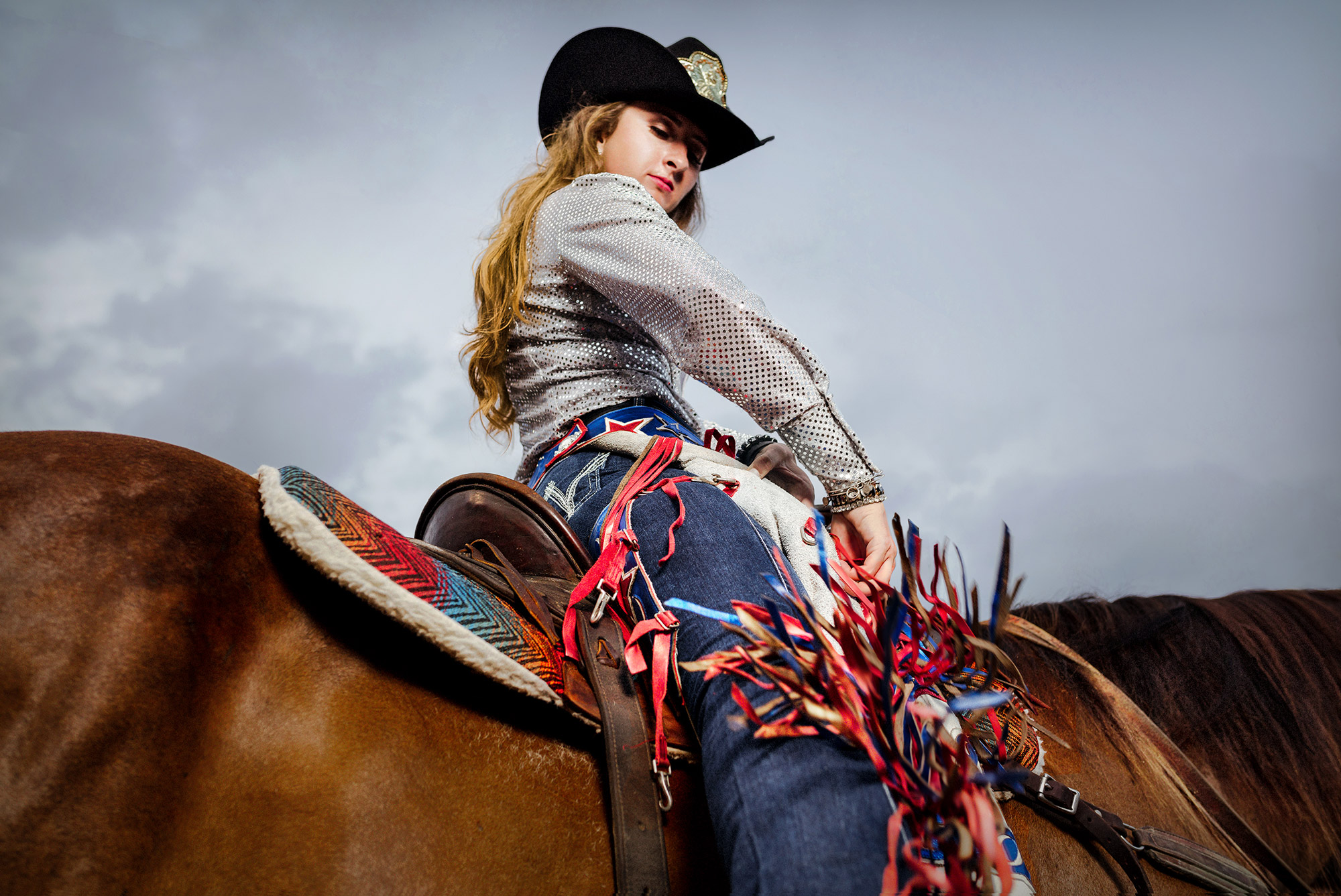
Photography by Chris Scott Snyder, Editorial Design by Root
